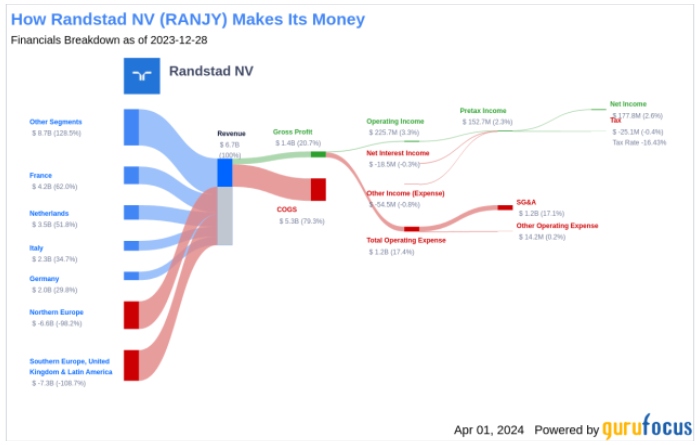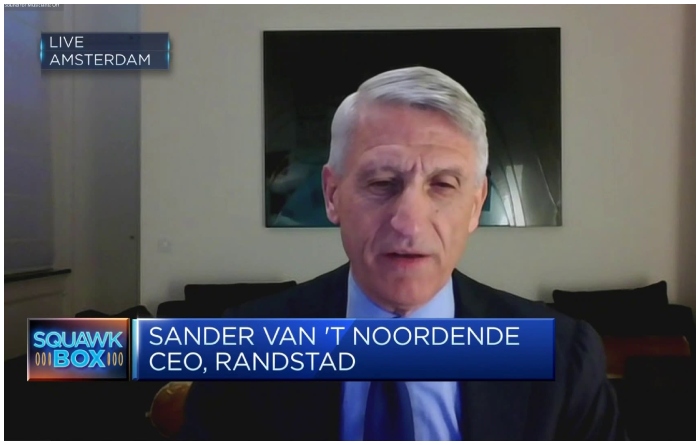David Iben famously said, “Volatility is not a risk we care about. What we care about is avoiding the permanent loss of capital.” When evaluating a company’s financial stability, it’s crucial to consider its balance sheet, especially its debt levels, as excessive debt can lead to financial distress or even bankruptcy. Let’s delve into Randstad N.V.’s (AMS: RAND) use of debt and assess whether this debt poses a significant risk.
Understanding the Role of Debt
Debt can be a double-edged sword for businesses. It can fuel growth and expansion but can become a burden if a company fails to manage it effectively, potentially leading to financial instability. The key concern is whether a company can comfortably meet its debt obligations without compromising its financial health. This involves examining both the company’s debt levels and its ability to generate cash flow to service this debt.

Randstad’s Current Debt Situation
As of December 2023, Randstad reported having $567.0 million in debt, a figure that has remained relatively stable compared to the previous year. Importantly, the company holds $261.0 million in cash reserves, resulting in a net debt of approximately $306.0 million.
Looking closer at the balance sheet, Randstad has short-term liabilities of $5.23 billion and long-term liabilities of $760.0 million. These are offset by short-term assets, which include cash and receivables totaling approximately $5.51 billion. This positions the company with a net liability overhang of around $479.0 million when considering liquid assets.
Given that Randstad’s total market capitalization is $8.58 billion, the level of liabilities appears manageable, but it warrants ongoing scrutiny by investors to ensure it does not escalate to a precarious level.
Debt Ratios and Serviceability
To gauge the risk associated with Randstad’s debt, we look at two critical ratios: the net debt to EBITDA ratio and the interest coverage ratio. Randstad’s net debt to EBITDA ratio is currently 0.31, indicating that the company does not rely heavily on debt to finance its operations. Furthermore, its EBIT covers its interest expenses 15.6 times over, suggesting that the company generates more than enough earnings to cover its interest obligations comfortably.
However, it’s important to note that Randstad’s EBIT has decreased by 24% over the last year. This decline in earnings could potentially compromise the company’s ability to service debt if it continues. Therefore, maintaining or improving earnings is crucial for sustaining financial health.

Free Cash Flow: A Critical Indicator
Beyond mere earnings, free cash flow is essential for assessing a company’s ability to repay debt. Free cash flow represents the actual cash available to a company after necessary capital expenditures, providing a clearer picture of financial flexibility.
In Randstad’s case, the company has performed well in this area, generating free cash flow that represents 93% of its EBIT over the past three years. This high conversion rate from earnings to free cash flow strengthens the company’s position to reduce debt, invest in new opportunities, or withstand economic downturns.
Conclusion: Is Randstad’s Debt a Concern?
Given the analysis, Randstad appears to manage its debt prudently. The company’s robust interest coverage and strong free cash flow generation provide a cushion against financial distress. However, the recent decline in EBIT is a concern that requires monitoring, as a continued downturn could pressure the company’s financial stability.
Investors should keep an eye on Randstad’s earnings trajectory and cash flow generation in future periods. While the current debt level is not alarming, the dynamics of its earnings and cash flows will play crucial roles in maintaining this stability.
In essence, Randstad seems capable of handling its current debt levels comfortably. Nonetheless, as with all investments involving debt, there is an inherent risk, which necessitates investors’ ongoing vigilance. For those particularly cautious about debt, exploring companies with minimal or no debt might be an alternative worth considering. As always, a comprehensive approach, including understanding potential external risks beyond the balance sheet, is advisable in the investment process.